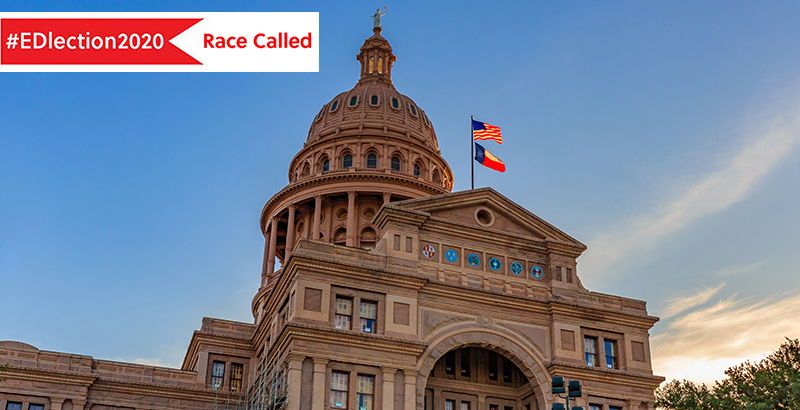Despite Major Push by Democrats, Texas House of Representatives, Always at Least a Little Purple, Stays Under Republican Control

2020’s KEY EDUCATION VOTES: See our full coverage of the 46 races that could reshape America’s schools following Election Day — and get the latest updates on state policies and students’ challenges during the pandemic by signing up for The 74 Newsletter.
Texas Democrats woke to an especially hard set of headlines this morning. The electoral “blue wave” many had predicted failed to wash over the state, despite record spending by supporters, massive voter turnout, momentum from the flipping of a dozen seats in the state House of Representatives in 2018 and political intel suggesting that the nine more needed to gain control of the lower chamber were within reach.
Rubbing salt in their wounds: The 2021 Legislature will have a Republican majority during the upcoming high-stakes, once-in-a-decade redistricting.
In fact, while some races have yet to be called, The Texas Tribune has reported it’s likely the split in the House will be essentially what it was during the last legislative session, in 2019: 83-67.
That presumptive majority will have its hands full. In addition to redrawing the state’s electoral map, House members of both parties will be hard-pressed to protect 2019’s historic and bipartisan school finance reform. Without a very large injection of federal stimulus funding — uncertain, to say the least — lawmakers will be trying to figure out how to keep the teacher pay raises and increases in classroom funding that both parties deemed long overdue.
Republicans, fearful of cutting funding for K-12 schools? Yes. Traditional school districts are typically the heart of the large, rural — and solid red — House districts. Accordingly, their elected representatives are very protective of them, not least because they are also often a community’s largest employer.
A decade ago, in the last recession, lawmakers cut $5 billion in school funding. As they failed to restore it, property taxes shot up, leaving Texans across the political spectrum wondering why, even as their levies went up, their classrooms just got more crowded.
The price tag for last year’s school finance reform: $6.5 billion.
2020’s KEY EDUCATION VOTES: See our full coverage of the 46 races that could reshape America’s schools following Election Day — and get the latest updates on state policies and students’ challenges during the pandemic by signing up for The 74 Newsletter.
Get stories like these delivered straight to your inbox. Sign up for The 74 Newsletter

;)
